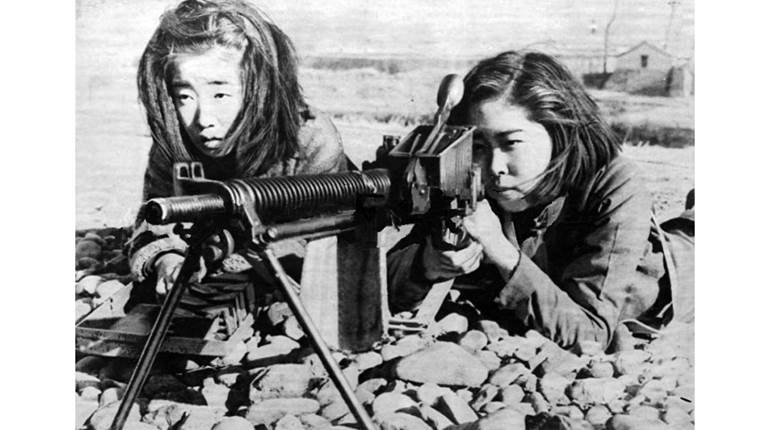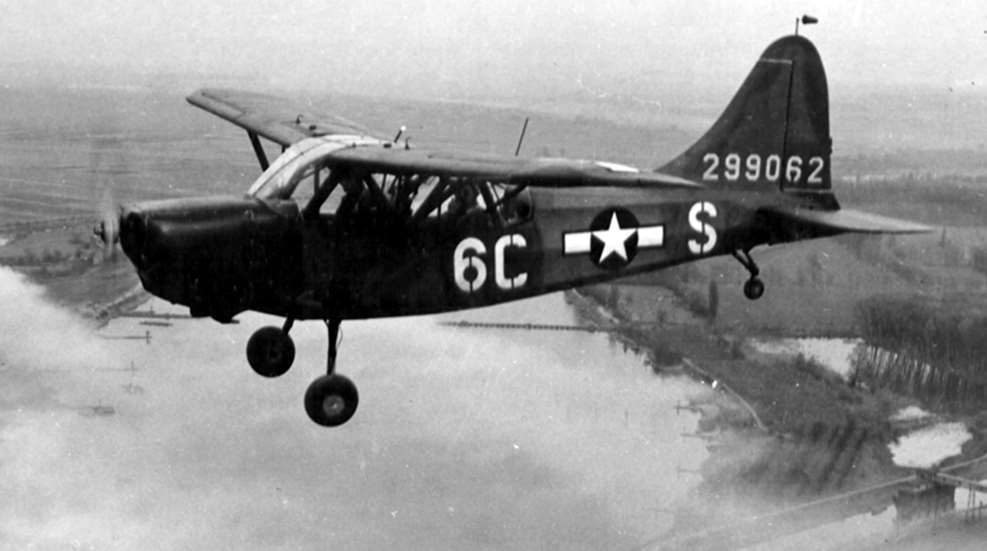
The M1911 and M1911A1 pistols are legends among firearms. Their remarkable exploits in the hands of American service personnel have been handed down among shooters since before World War I. I recently came across a whopper of an M1911 story that stopped me in my tracks like a hit from a .45 ACP. I figured that the big Colt pistol could do quite a bit, but when I heard that it brought down a German aircraft in 1945, I had to follow up on the tale.
It all happened on the way to Berlin. In this particular case, the story centers on the 5th Armored Division, part of the vanguard of the U.S. 9th Army. The American tanks, tank destroyers and halftracks had recently crossed the Rhine at the Ludendorff Railroad Bridge at Remagen. Once across the last great natural barrier in Germany, American forces were spreading like wildfire, blasting their way east towards the capital of the Third Reich. There was much excitement that the war would soon be over. There was also much concern. While many German units would surrender or simply fade away, other units, particularly the fanatical SS, were fighting to the last man. No one wanted to meet their end with victory so close.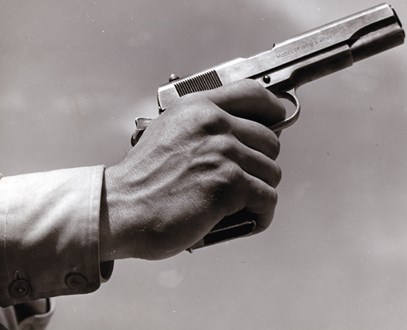
The M1911 pistol—the only pistol credited with a World War II air-to-air victory.
On April 12, 1945, travelling a few thousand feet above the advancing American tanks was a Stinson L-5 spotting aircraft, named “Miss Me.” Lt. Duane Francies was the pilot. His observer was Lt. William S. Martin. Together, they had successfully located multiple German positions in the path of 5th Armored Division troops. During their mission on April 12, the men aboard “Miss Me” had seen the smokestacks of the Spandau Works rising in the distance. This meant that Berlin was not far away. Francies banked his aircraft to return to the 5th Armored and help map out the approach routes to the European war’s final prize.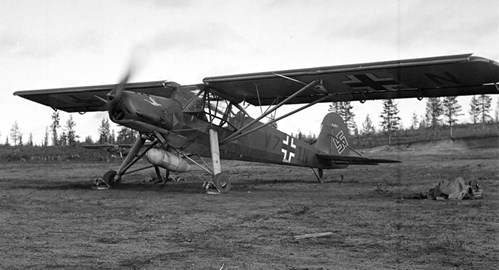
The German Fieseler Fi 156 Storch
As “Miss Me” closed in on the lead elements of the 5th Armored, Francies noticed a German aircraft flying just a few hundred feet above the treetops. It was a Fieseler Fi 156 Storch (Stork), a German tactical recon aircraft, flying the same type of mission as “Miss Me.” As Martin radioed that they had spotted a German aircraft and that “we are about to give combat.” As Francies dove on the target, his original intent was to drive the Storch onto the anti-aircraft guns of the American armor below. Strangely, a throwback sort of aerial combat would ensue.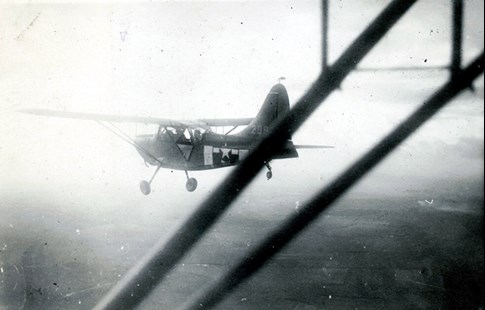
A view from inside a Stinson L-5.
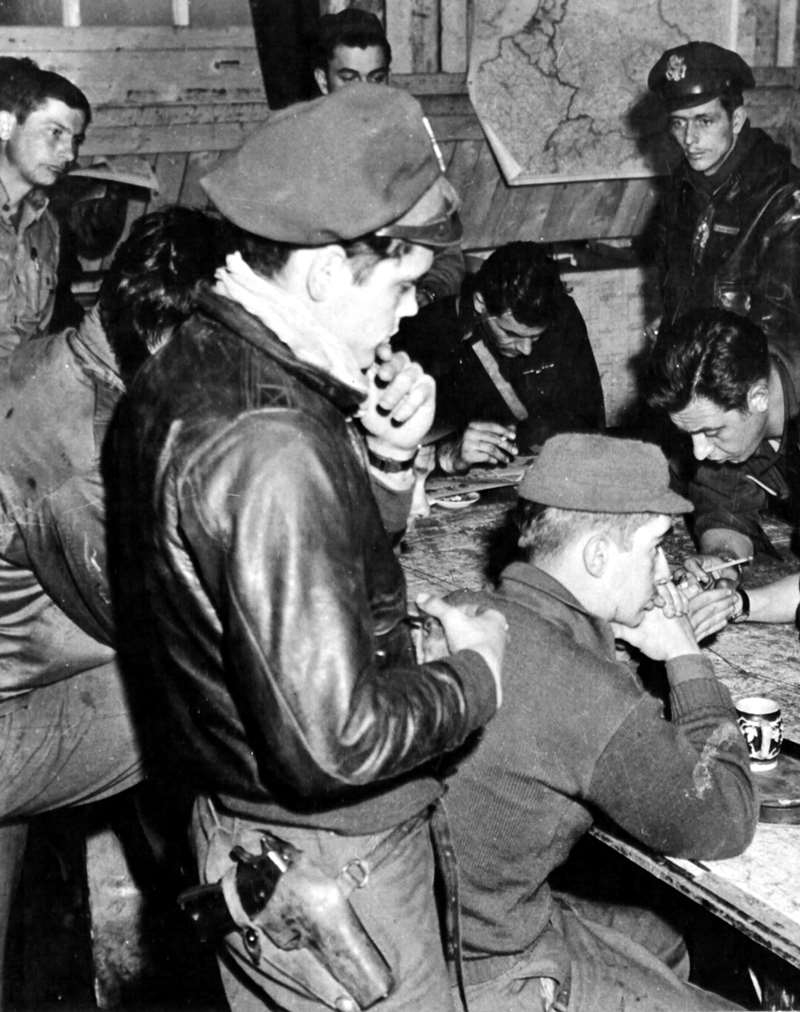
With the L-5’s side doors open, both of the American aviators readied their M1911A1 .45 ACP pistols. The German Storch began to circle as tightly as possible. Francies maintained his altitude advantage, and “Miss Me” stayed with the tightly turning German. Pistol magazines were fired until empty, reloaded, and another barrage of .45 slugs were fired again. The range closed to just 10 yds., the Americans blasting all the way. There was no return fire from the German aircraft.
Suddenly the Storch staggered, and then spiraled in to crash in a placid cow pasture. The German’s wingtip touched first and as it snagged the Storch cartwheeled into the field. Francies quickly brought “Miss Me” down to land, with Martin shouting into the radio: “We got him! We got him!” The tankers and armored infantrymen had just watched the strangest air battle of World War II. Many were dumbstruck by what they had seen.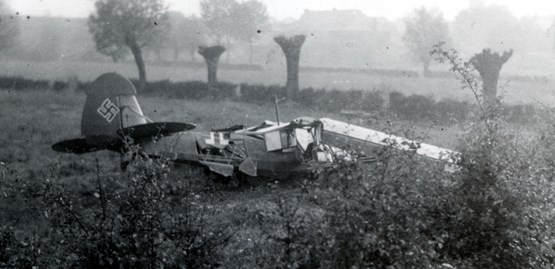
A wrecked Storch.
Francies and Martin exited “Miss Me” and crossing the field they watched the German pilot and observer tumble out of their wrecked plane. The German pilot tried to hide but Martin found him and kept him covered with his .45. Francies tended to the observer, who had been wounded in the foot. Ultimately, the surprised and shaken Germans were just glad to be alive. Francies would later describe his air combat experience as “pure joy.” It is the only confirmed American air-to-air victory achieved with a pistol.
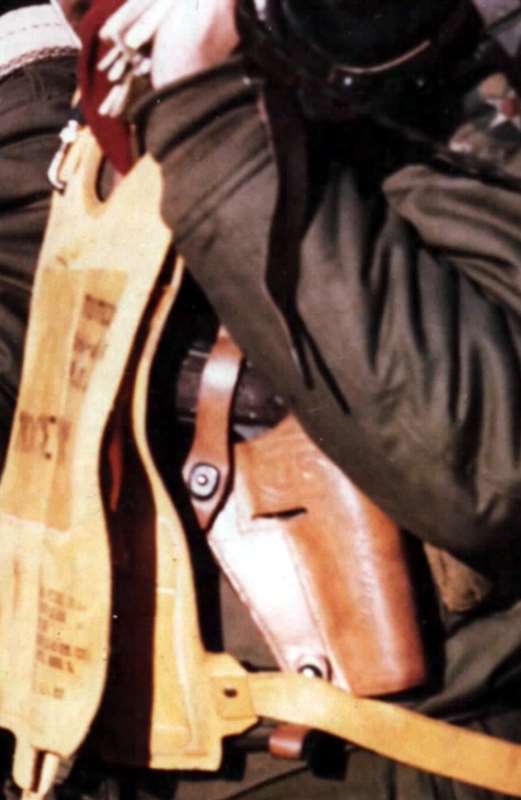
This remarkable incident was first recounted in Cornelius Ryan’s fantastic book The Last Battle, published by Simon & Schuster in 1966. I checked the combat records of the 5th Armored Division and found this entry:
“Enemy losses for 12 April were as follows:
“-Personnel, PWs: two thousand (2000) Killed: unreported.
“-Material losses were not yet reported, but it was known that one (1) ME109 had been shot down, two (2) enemy liaison planes destroyed (one (1) in an encounter with a Division liaison plane whose pilot and observer shot the enemy plane out of the sky with fire from a sub-machine gun).”
Apparently, the recording secretary of the 5th Armored couldn’t believe the German aircraft was shot down by pistol fire. Regardless, Colt pistols did the work, and there was no submachine aboard “Miss Me.” So there you have it, another amazing story about the long-serving M1911 pistol—on land, at sea and even in the air.
Additional Reading:
The M1911 Gets a Zero













